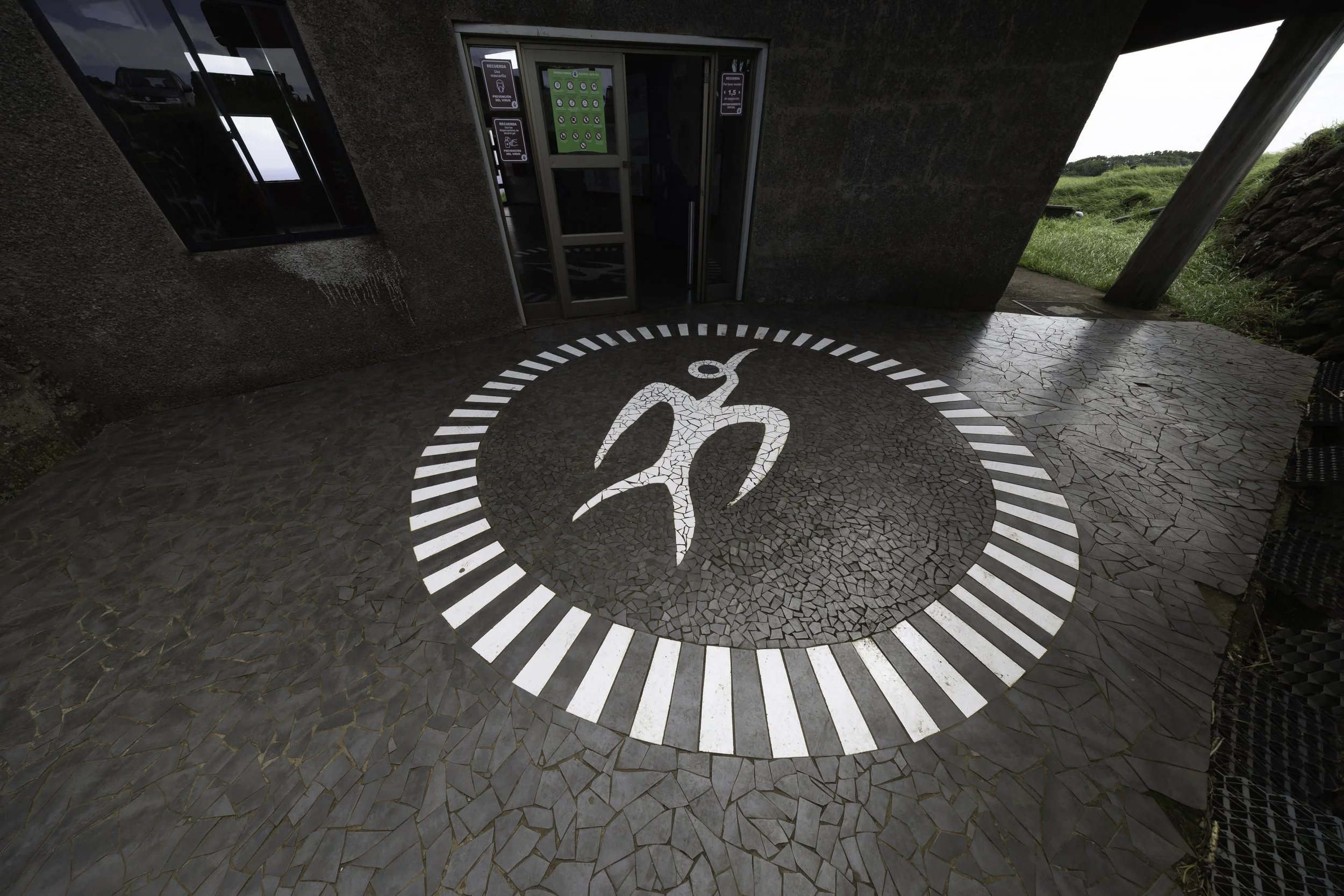Day 3 Easter Island
Ana Te Pau
Ana Te Pahu, the bananas cave: Several underground chambers interconnected whose total route exceeds 7 kilometers in length. Ana Te Pahu could be translated like “the cave of the drum“, since pahu in Rapanui languagedesignates a type of drum. This name comes from the thin layer of hardened lava that covers the cavity forming a gigantic natural drum of a kilometer and a half in diameter. If you hit or jump over the lava bark, a vibration resonates inside. Inhabitants used this cave as a dwelling. One of the main chambers of Ana Te Pahu was used as a water reservoir, since the frequent precipitations, typical of the subtropical climate, filter through the rock and accumulate in the interior. This allowed the residents to have a very accessible water reserve and saved the journey to more remote natural wetlands, such as Rano Aroi. Ana Te Pahu is also known as the “cave of bananas” because there are a lot of these trees at the entrance located a few meters below the surface. Next to them grow vines, avocados and tubers like taro or yam.
Ahu Huri A Urenga "The Astronomer"
Ahu Huri A Urenga, "The Astronomer" - the only statue with four hands: The single moai statue of Ahu Huri A Urenga is the only one known to have four hands. The symbolic meaning of this is unknown. For such a well-planned platform as Ahu Huri A Urenga, any bigger flaw would certainly have been unacceptable, so the extra pair of hands was surely not a mistake.
The monument Ahu Huri A Urenga is astronomically aligned with the winter solstice; on the shortest day of the year (around 21st of June), the moai will face the rising sun. After this date, the days will be getting longer again. The ahu is aligned to this event with a precision of within a single degree.
Many Rapa Nui monuments have been proven to be astronomically aligned, and Ahu Huri A Urenga has gotten especially well-known for this characteristic. For a people completely dependent on what nature gives, it is of highest importance to know when seasons change.
Vinapu - Ahu Tahira
Vinapu - area with Ahu Tahira, most perfect ahu rock wall of Rapa Nui: Vinapu is a coastal area in the south-west part of Rapa Nui. It has two ahu platforms - Ahu Vinapuand Ahu Tahira - both with late period moai statues and topknots. Ahu Tahira is of highest importance to the island for its rock wall engineering being unmatched in precision at Rapa Nui.
Ahu Tahira is by far the most perfectly fit ahu rock wall of Rapa Nui. The flawless fittings of Ahu Tahiraare made with a different engineering philosophy than virtually all other ahus: the stone blocks were constructed and polished for a perfect fit, as opposed to randomly trying to fit naturally shaped rocks. The back wall is still in perfect condition
The high level of rock wall carving that Ahu Tahira shows doesn't really belong in Rapa Nui as well as the rest of Polynesia. This makes many draw conclusions on contact with a different civilization. The most probable option would be the Inca Empire, which co-existed with Rapa Nui high culture (16th century), and the Incas are well-known for being the masters of rock wall building.
Orongo
Orongo ceremonial stone village for birdman competition: Orongo (or 'Oroŋo in Rapa Nui writing) is the ceremonial village used by the Rapa Nui people during the birdman era. It's located on the brink of the volcano Rano Kau, looking out towards the sea. Houses are not the common hare vaka ("boat houses") but are made entirely out of stone - more specifically one called kehu by the Rapa Nui people; a flat, solid stone (as opposed to the common volcanic, light stone filled with small pockets of air). Being of this material makes the houses survive the strong winds at the top of the volcano.
Rano Kau
Rano Kau, also known as Rano Kao, is the largest volcano and one of the most beautiful and impressive natural settings that can be admired on Easter Island. The sensation of immensity and silence, interrupted only by the wind, the distant sound of the waves and the occasional squawking of seabirds, makes Rano Kau one of the favorite and unforgettable places for visitors. The last eruption of the Rano Kau estimated about 180 thousand years ago, and that gave rise to the immense caldera of 1.6 km in diameter.
The interior of the crater, with walls of more than 200 meters that protect it from strong winds and favor the accumulation of humidity, constitutes a large natural greenhouse that generates a favorable microclimate for the development and cultivation of many vegetable species.Several expeditions of scientists have gone down to the lagoon to extract samples of the sediments and study the different layers that have accumulated over time, which will allow us to better understand the environmental past of Rapa Nui.
During our selfie shot the wind was so strong we were almost blown into the the caldera. The views were spectacular. You can see the once a day flight from Santiago on the tarmac. At the end of the day we did a quick roll through town to stop and get our passports stamped.


































